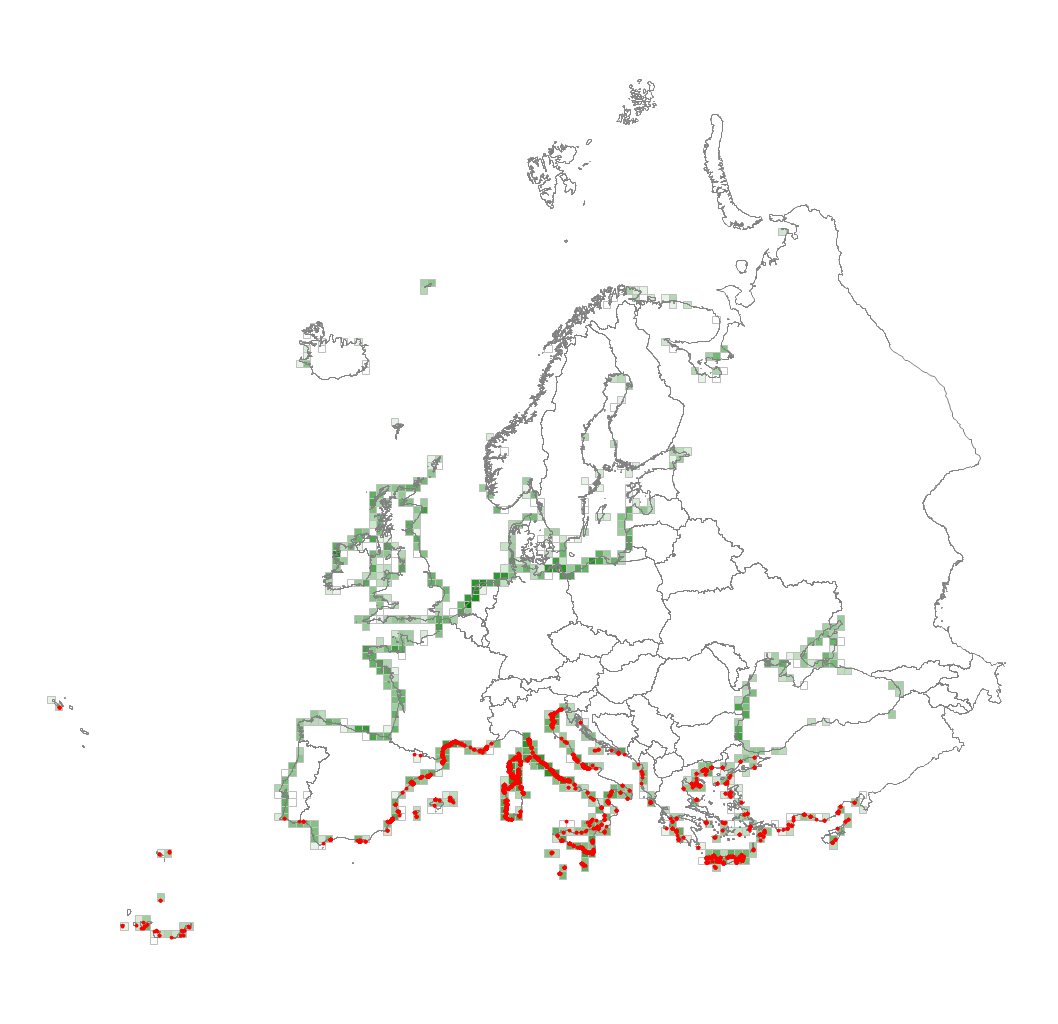N16 Mediterranean and Macaronesian coastal dune grassland (grey dune)
Stable (grey) dunes of fixed sands along the Mediterranean and Macaronesian coasts, and of the thermo-Atlantic coasts of Portugal, southwestern Spain and North Africa inland from wind erosion and salt deposition. They have a more or less complete cover of graminoids and herbs, often with a contingent of colourful spring annuals capitalising on early rains. The flora varies according to regional climate and dune topography. They may represent a temporary phase, giving way to evergreen sclerophyll scrub and woodland, or may form more permanent grassland at sites not suitable for shrubland. Through much of the Mediterranean, the habitat has been destroyed, contaminated by the invasion of non-native species or is much influenced by tourism, urbanisation, infrastructure development, arable cultivation, nitrogen deposition and afforestation.
Chytrý M., Tichý L., Hennekens S.M., Knollová I., Janssen J.A.M., Rodwell J.S. … Schaminée J.H.J. (2020) EUNIS Habitat Classification: expert system, characteristic species combinations and distribution maps of European habitats. Applied Vegetation Science 23: 648–675. https://doi.org/10.1111/avsc.12519
Version 2021-06-01, https://doi.org/10.5281/zenodo.4812736.
For the official presentation of the EUNIS Habitat Classification from the European Environment Agency, please see: EUNIS Terrestrial Habitat Classification 2021. The FloraVeg.EU presentation may show modifications and partial updates to the habitat classification.

1.jpg)
2.jpg)
3.jpg)
4.jpg)
5.jpg)
6.jpg)
7.jpg)
8.jpg)
9.jpg)